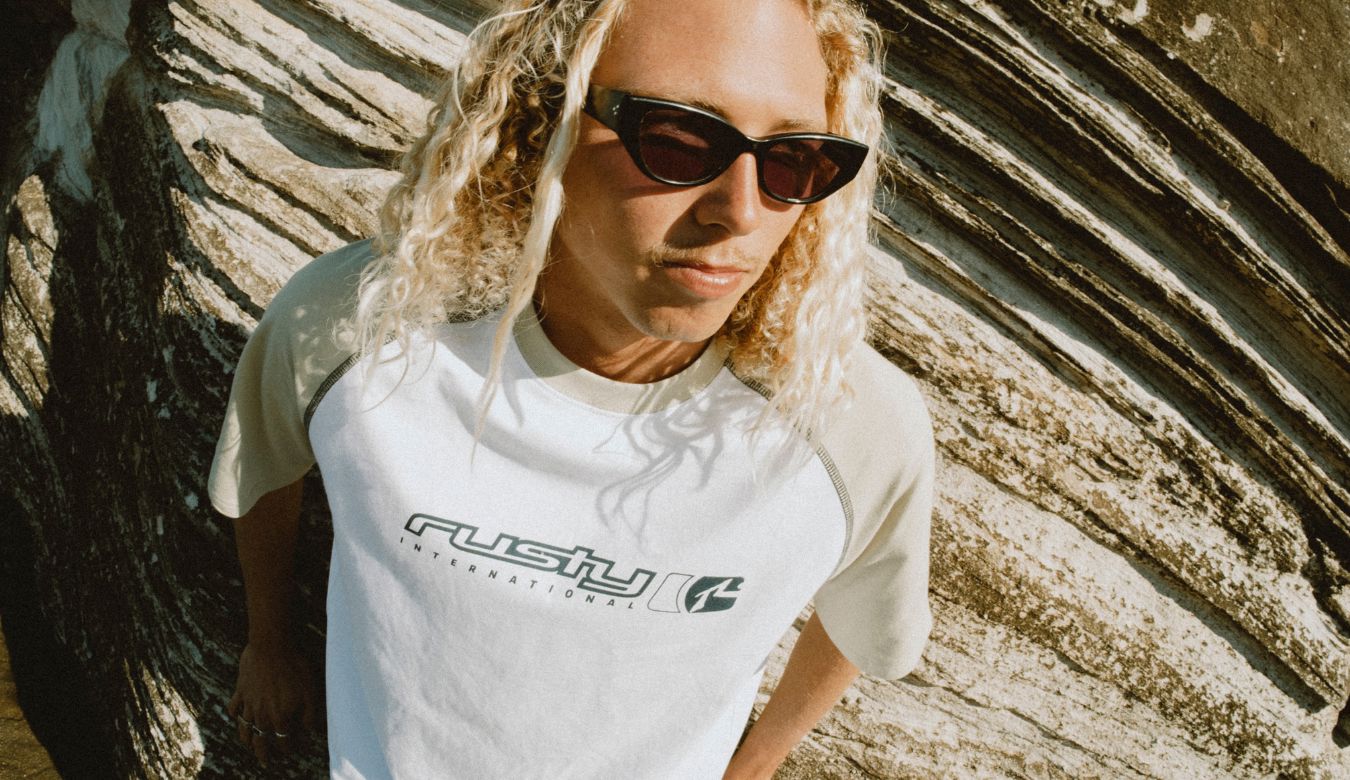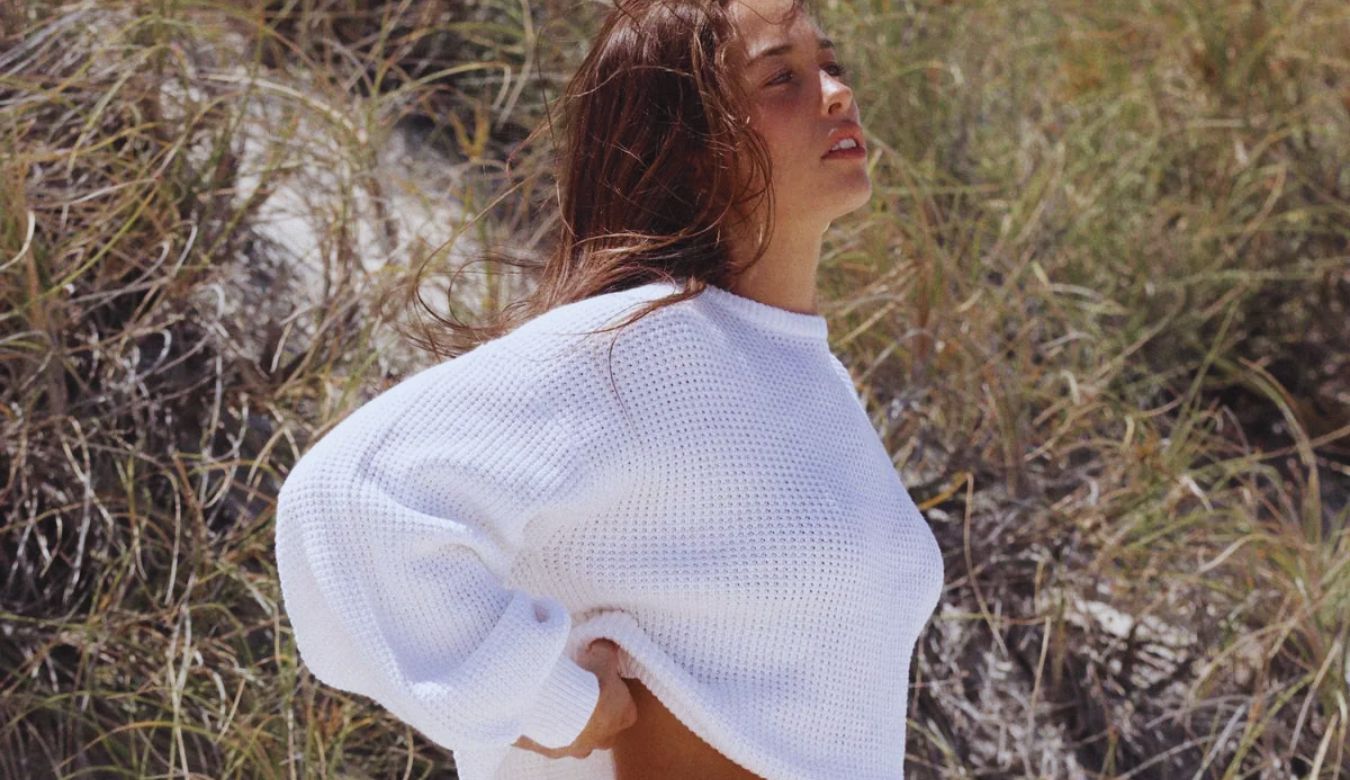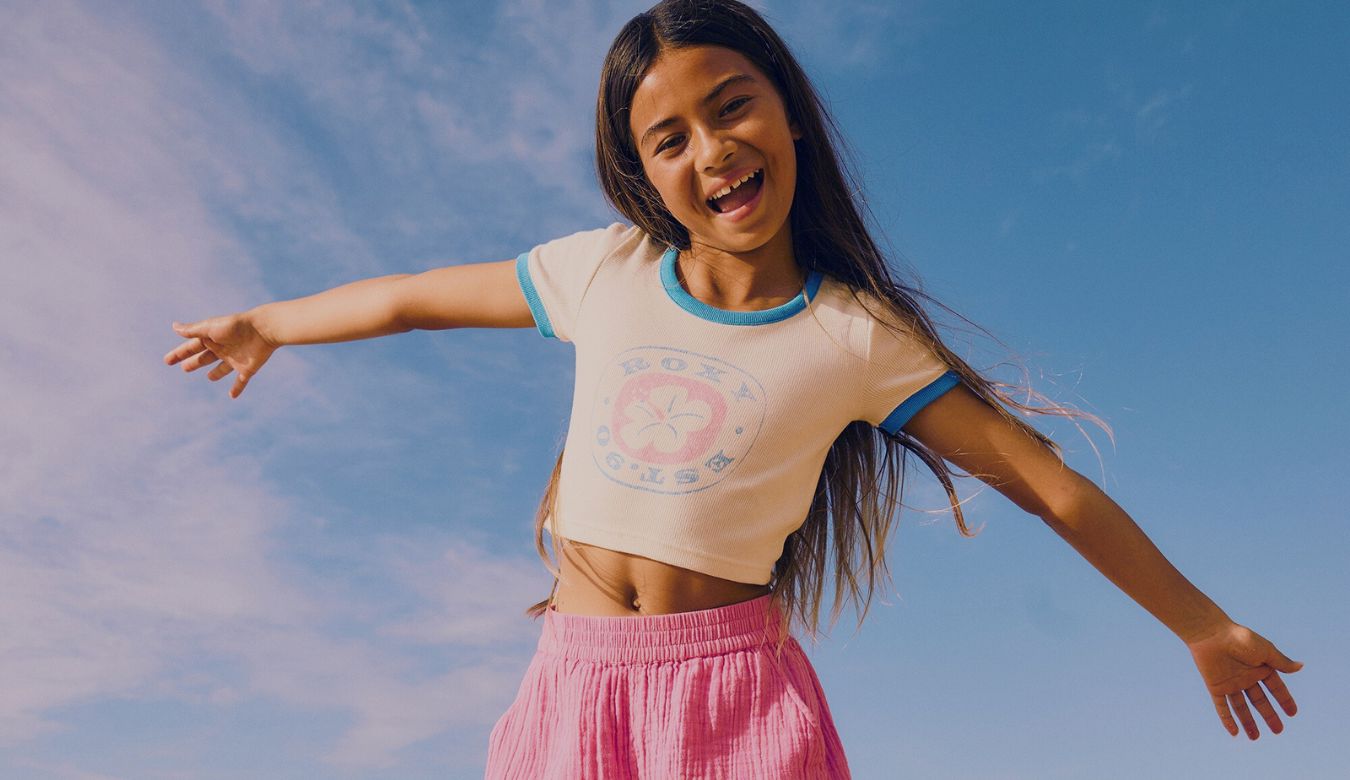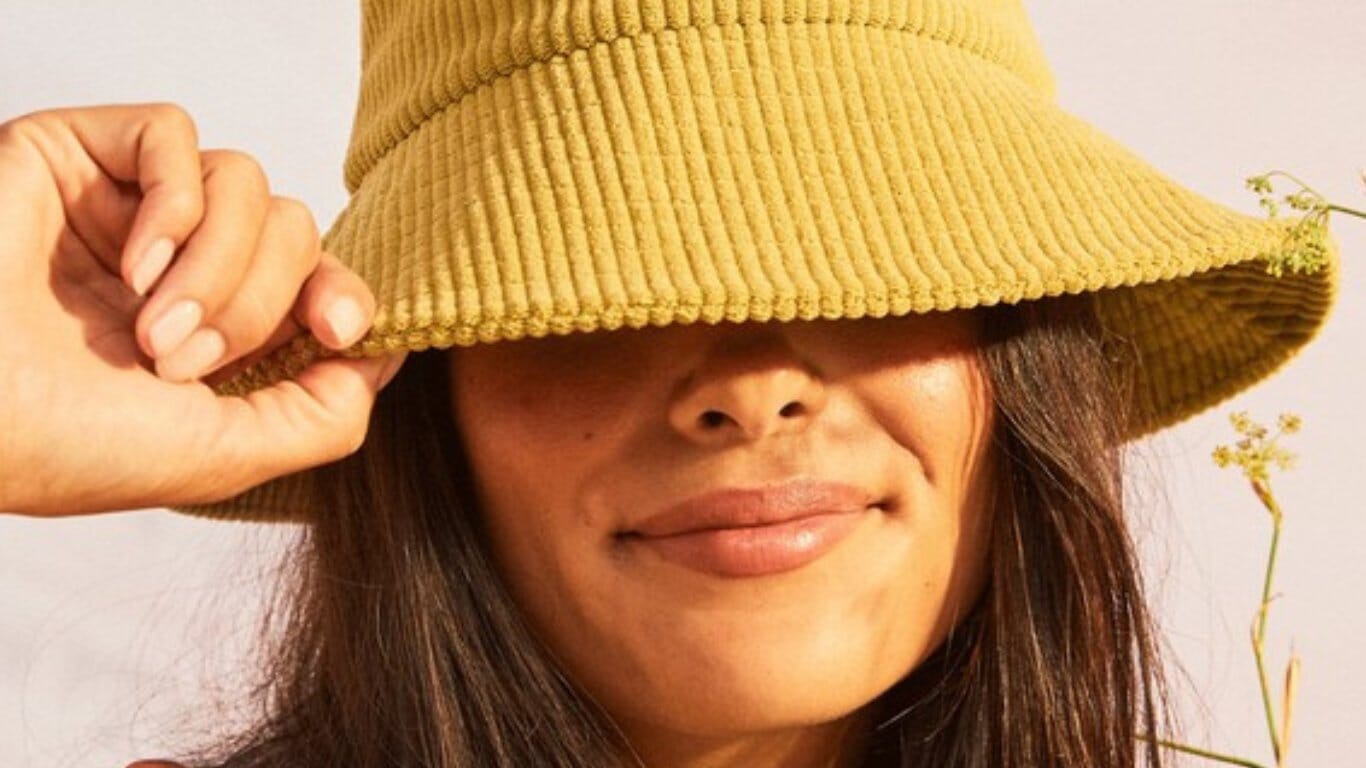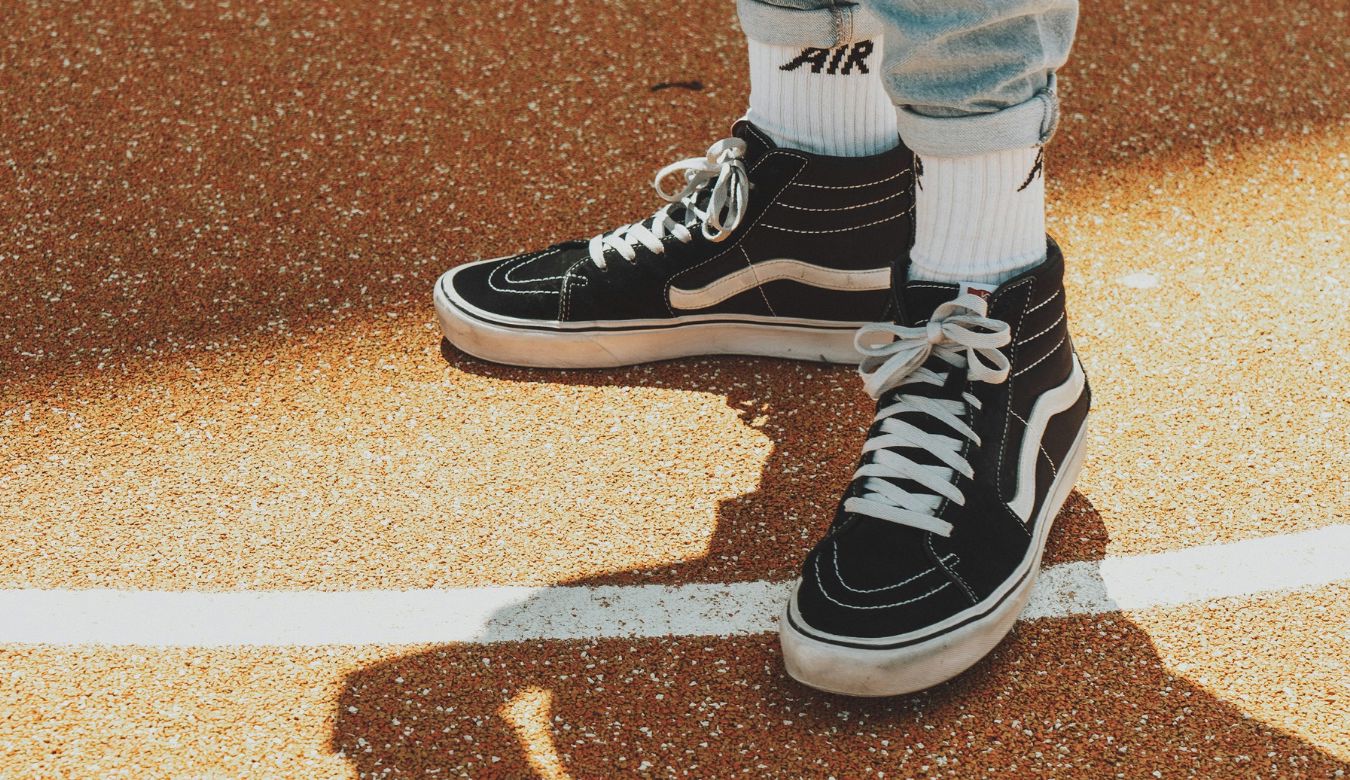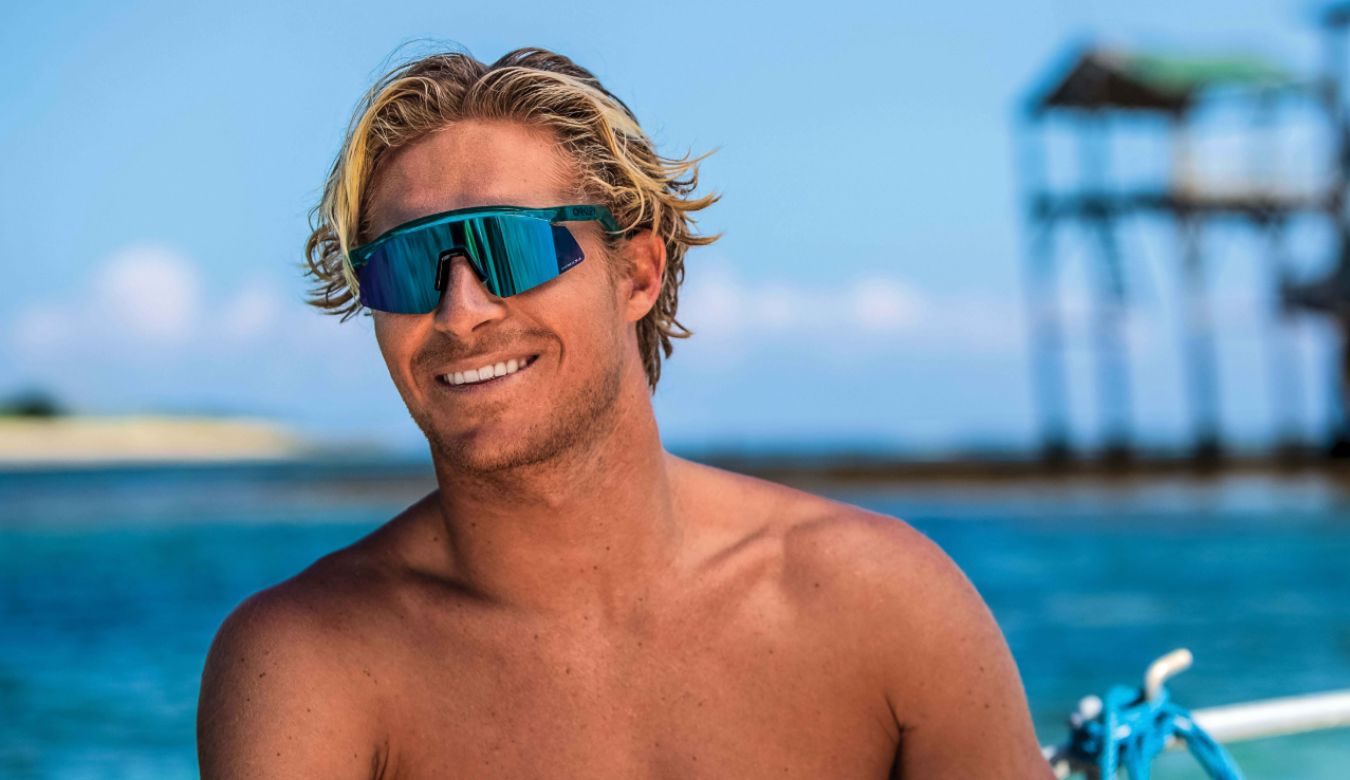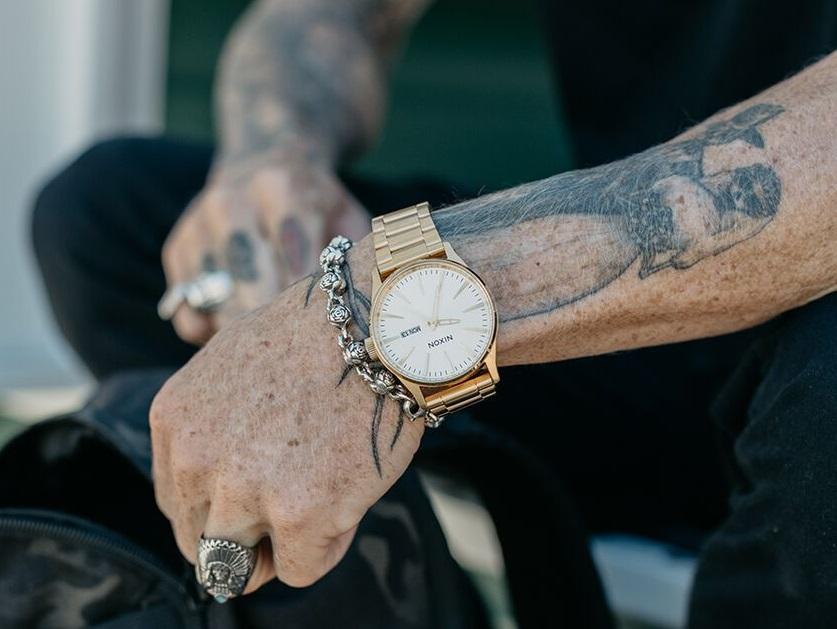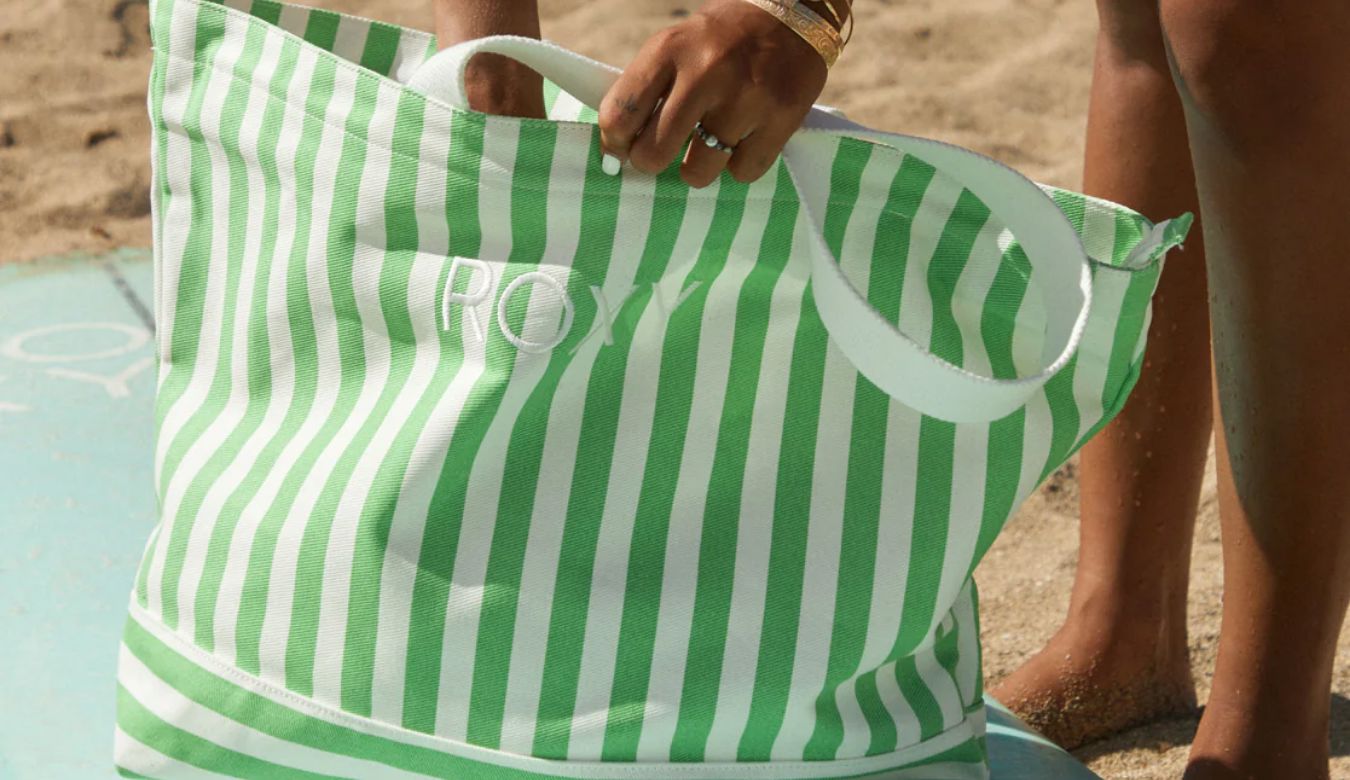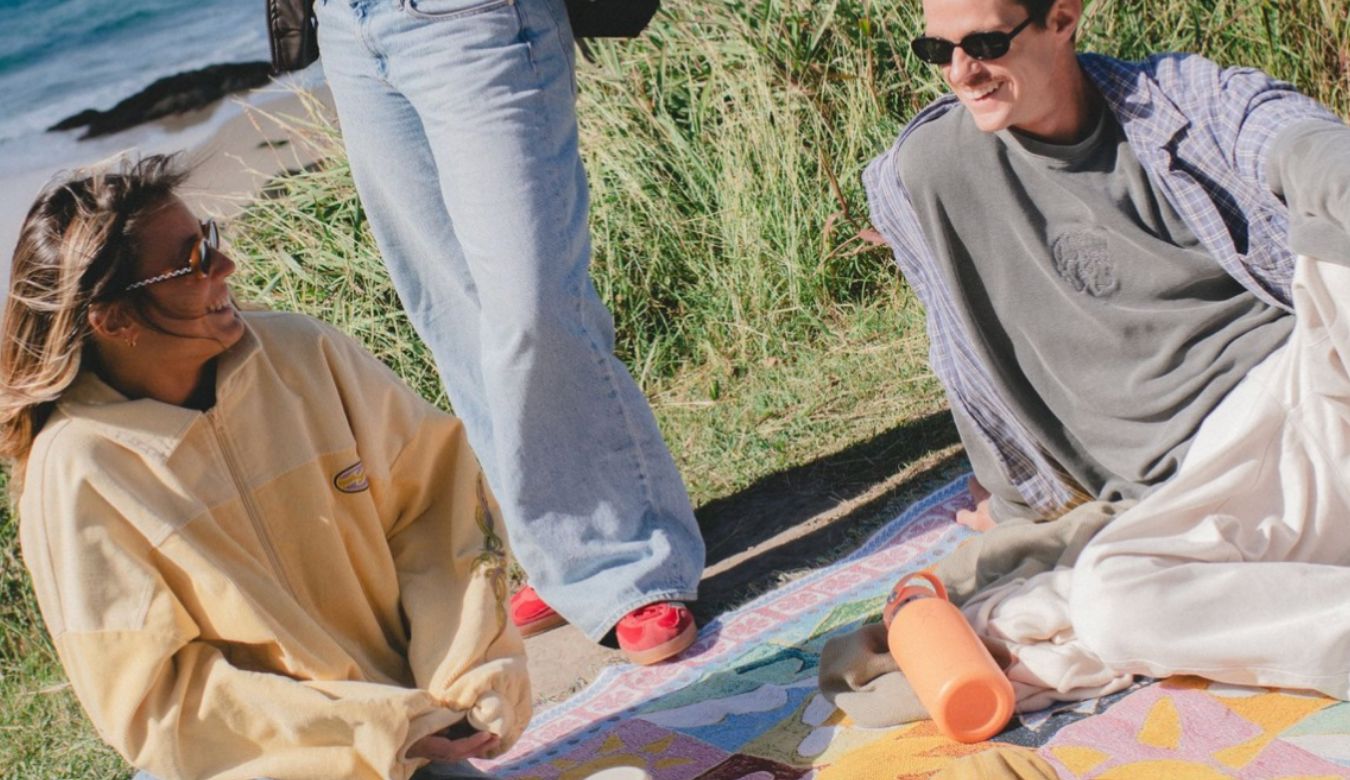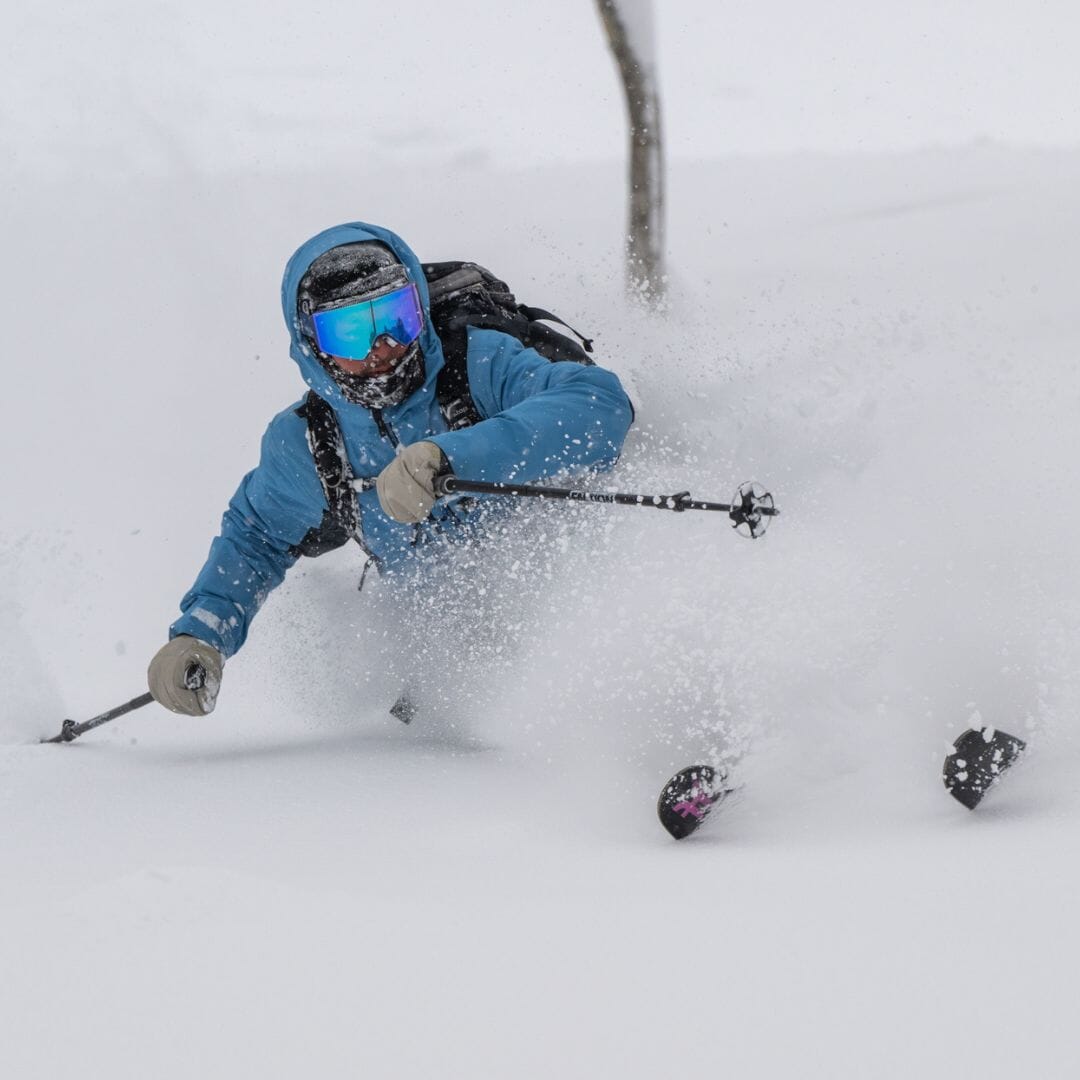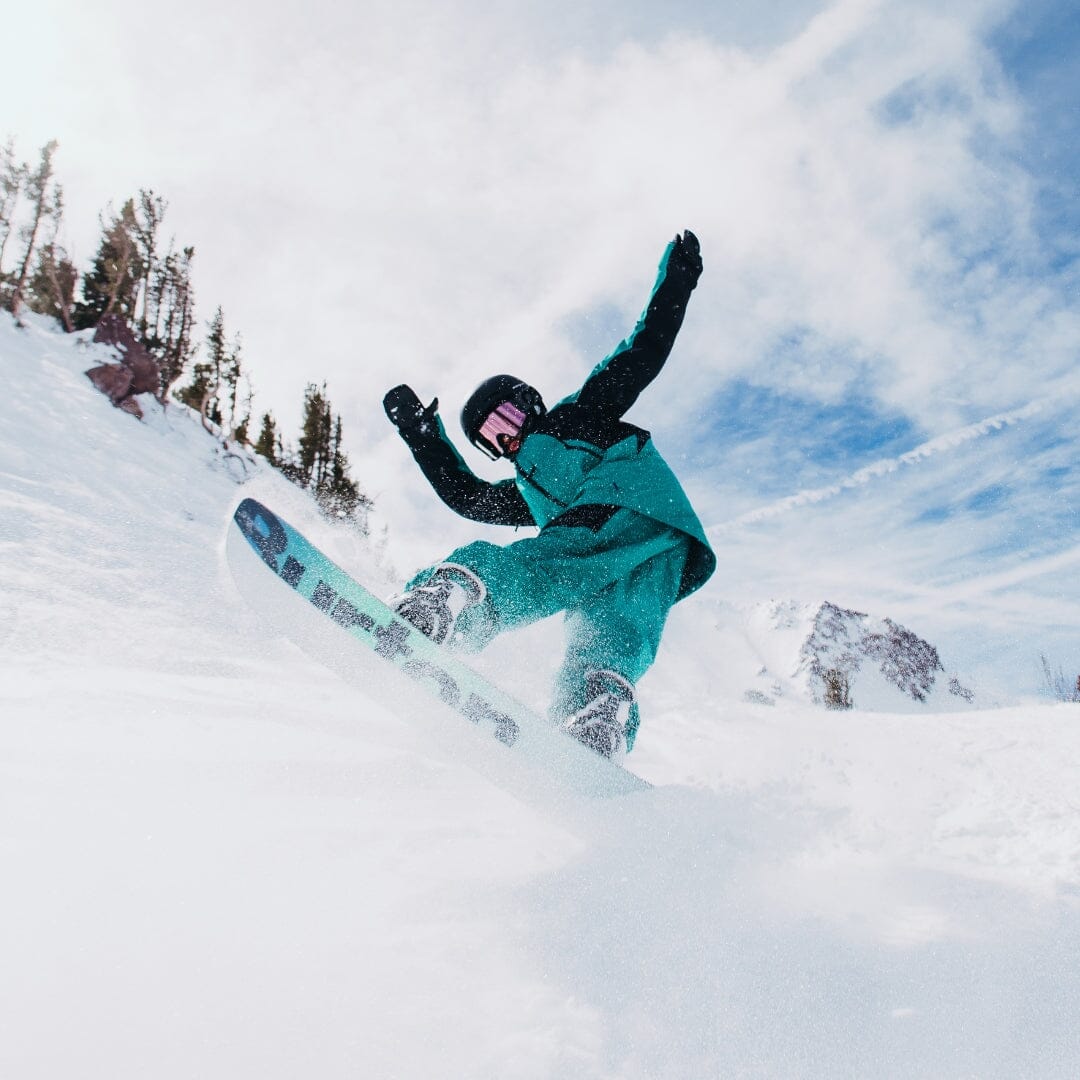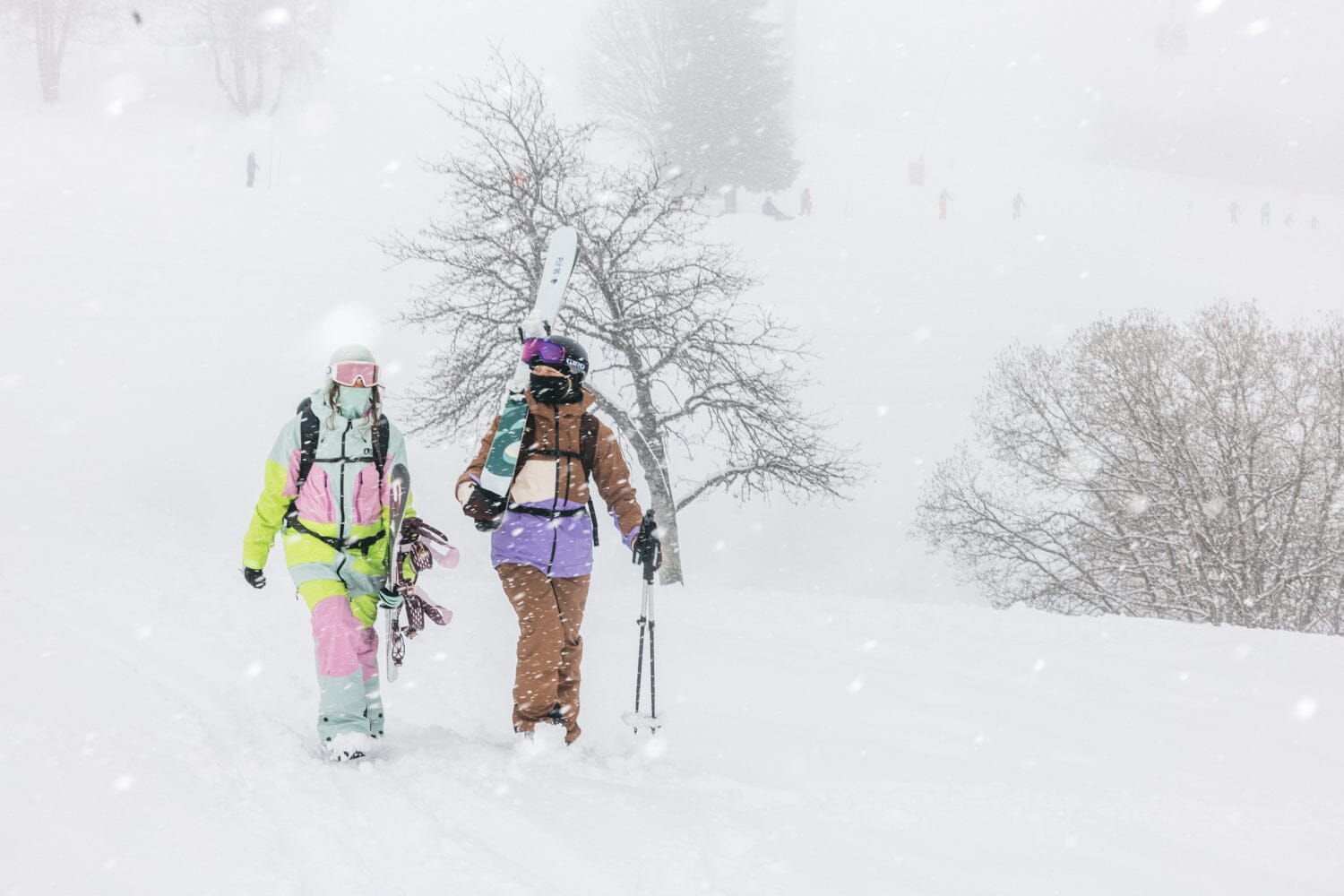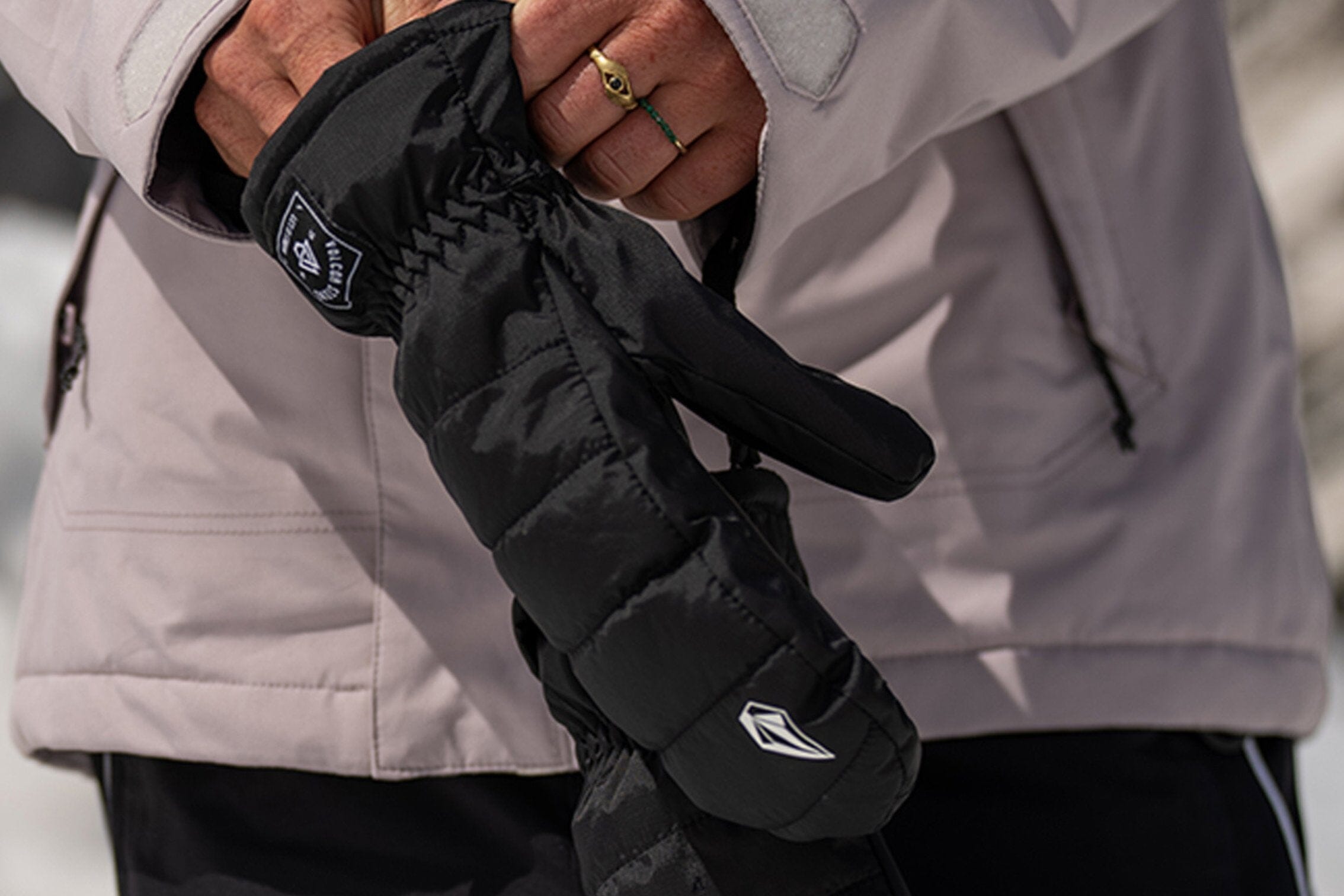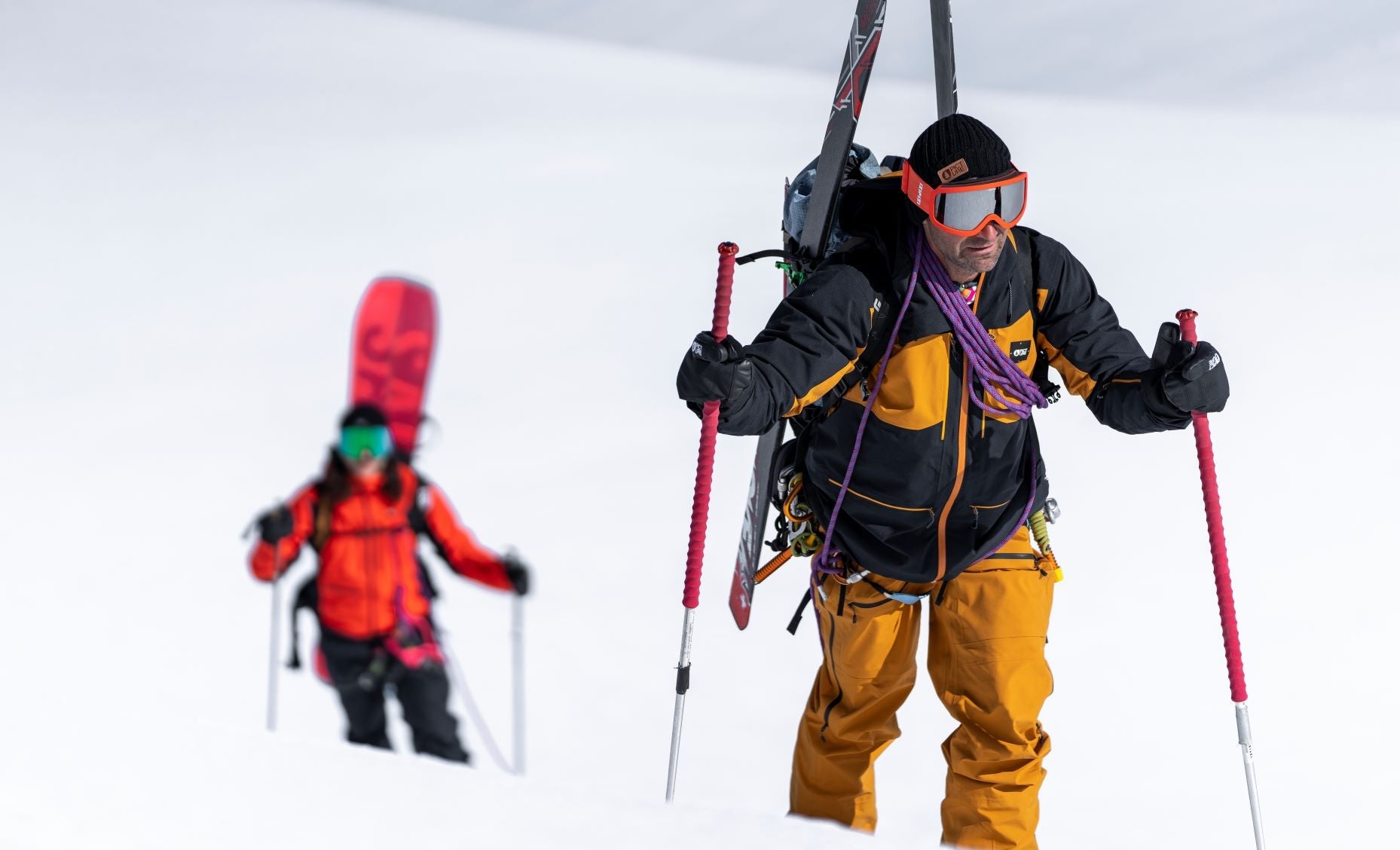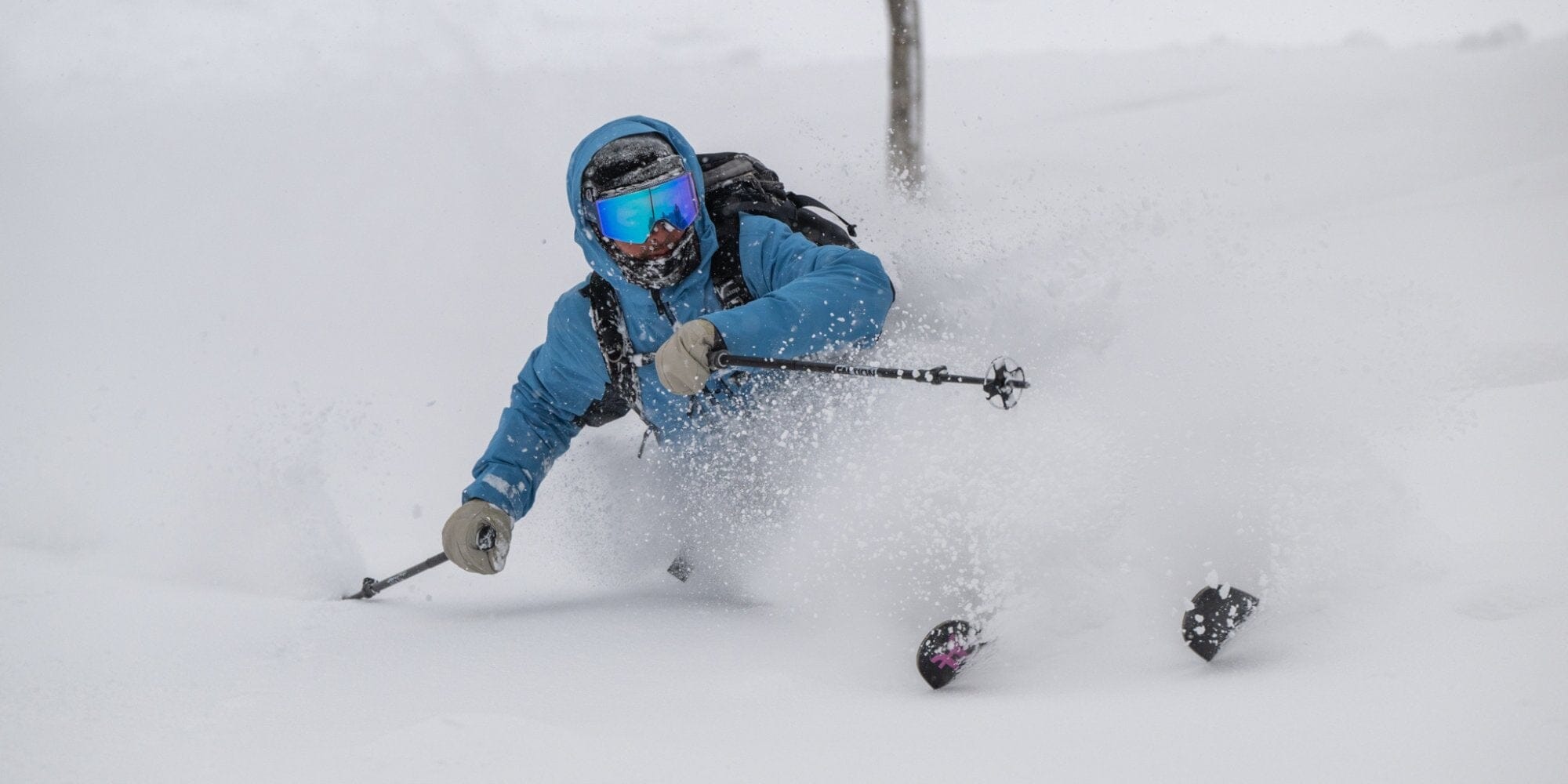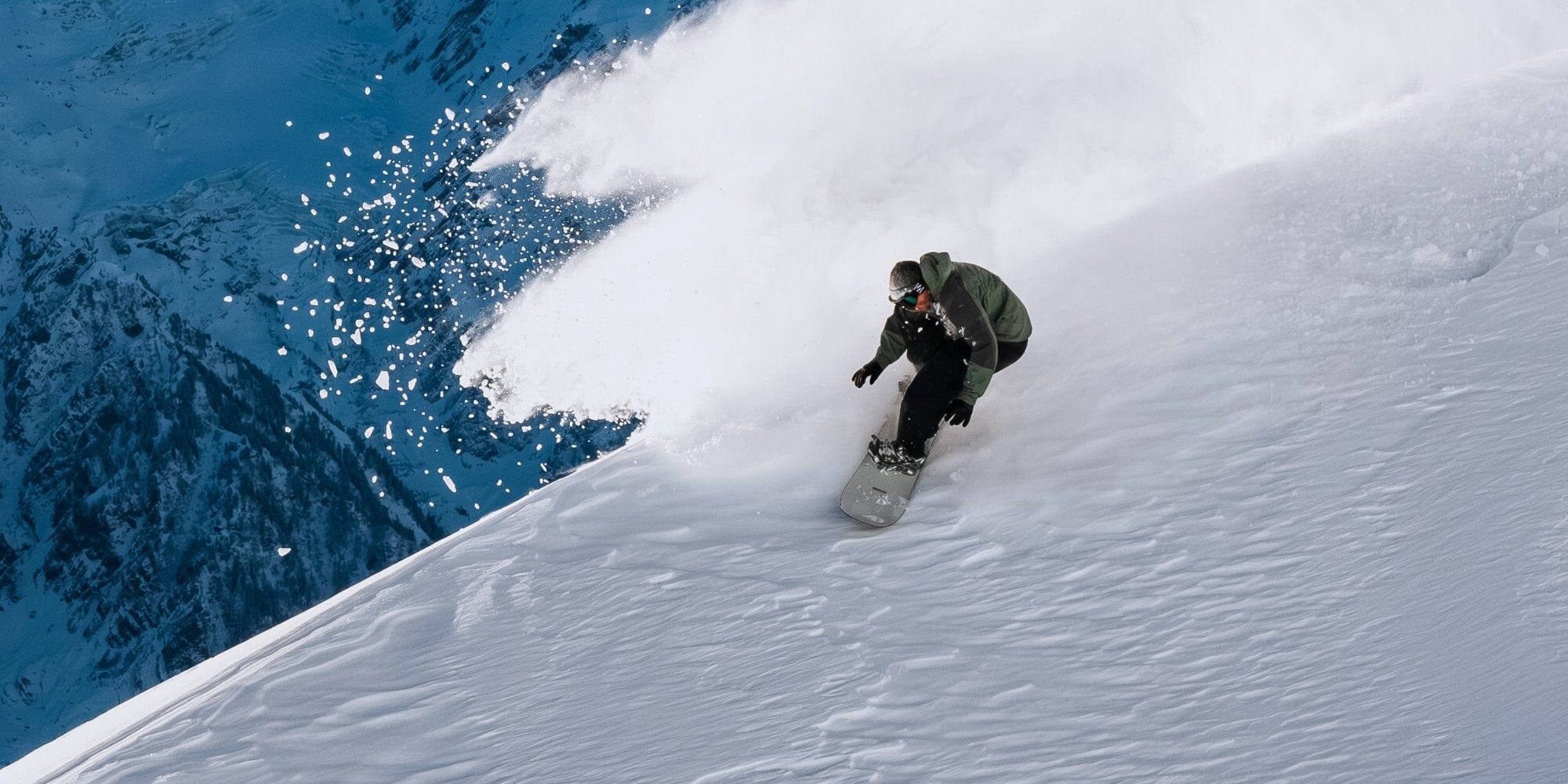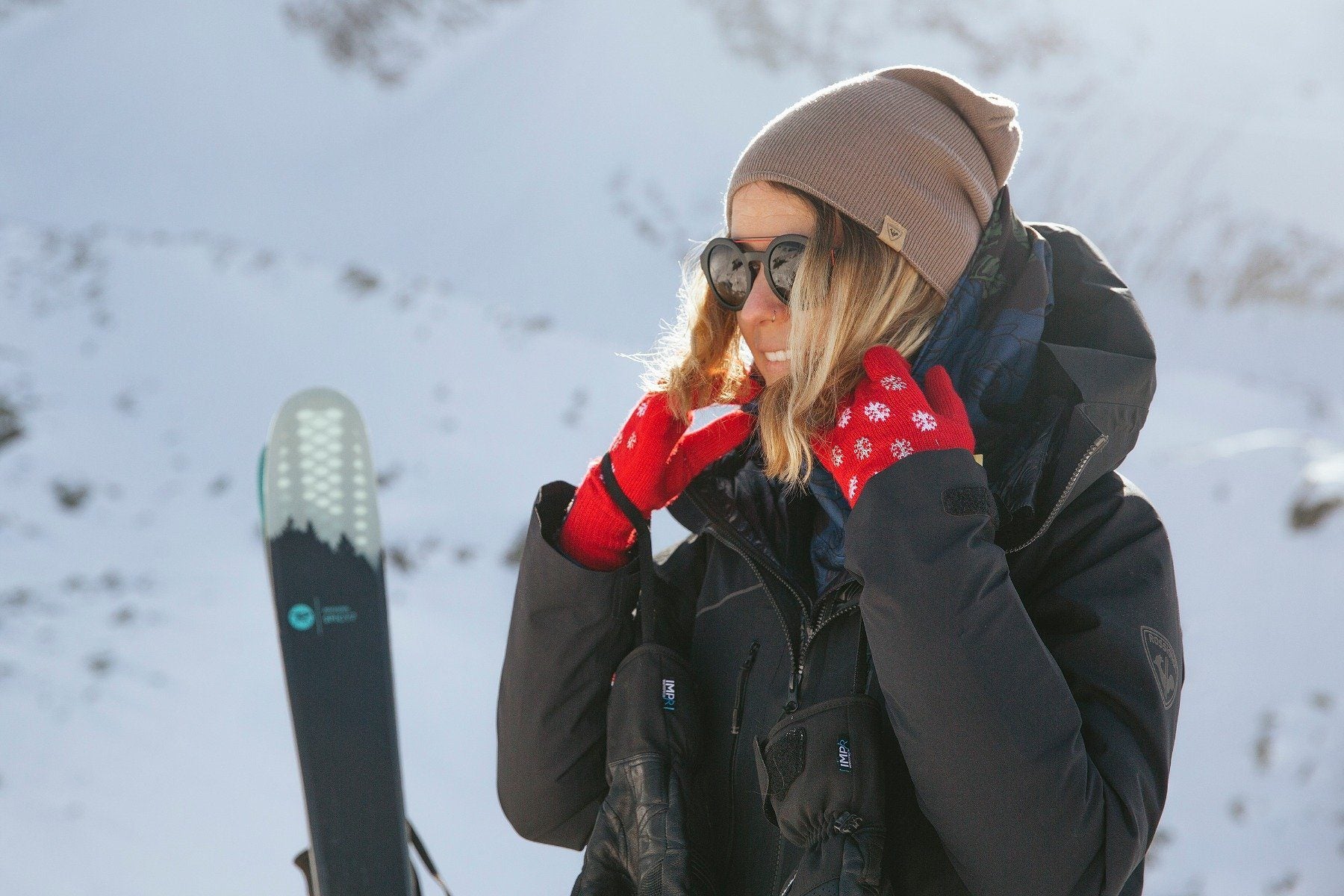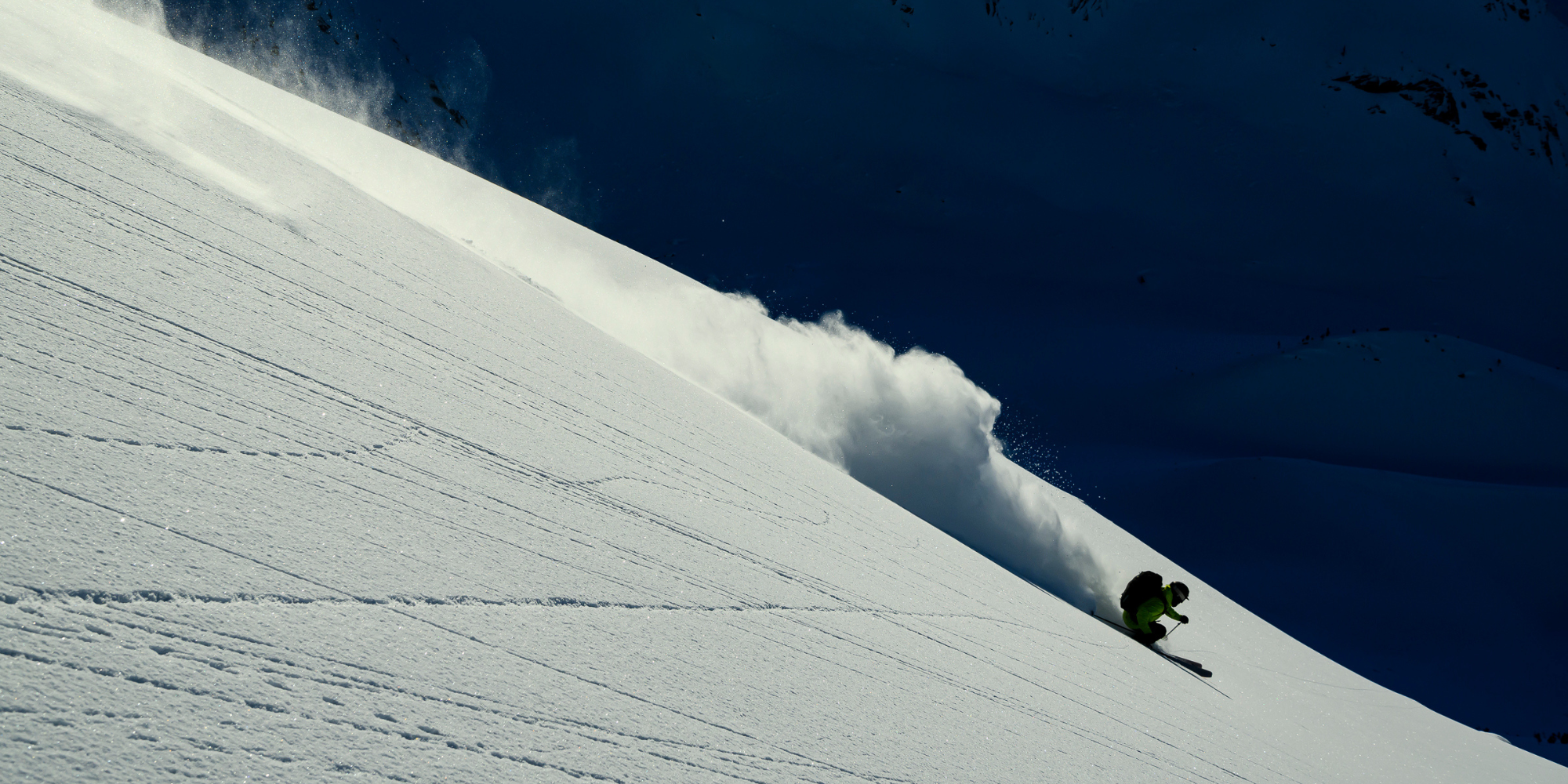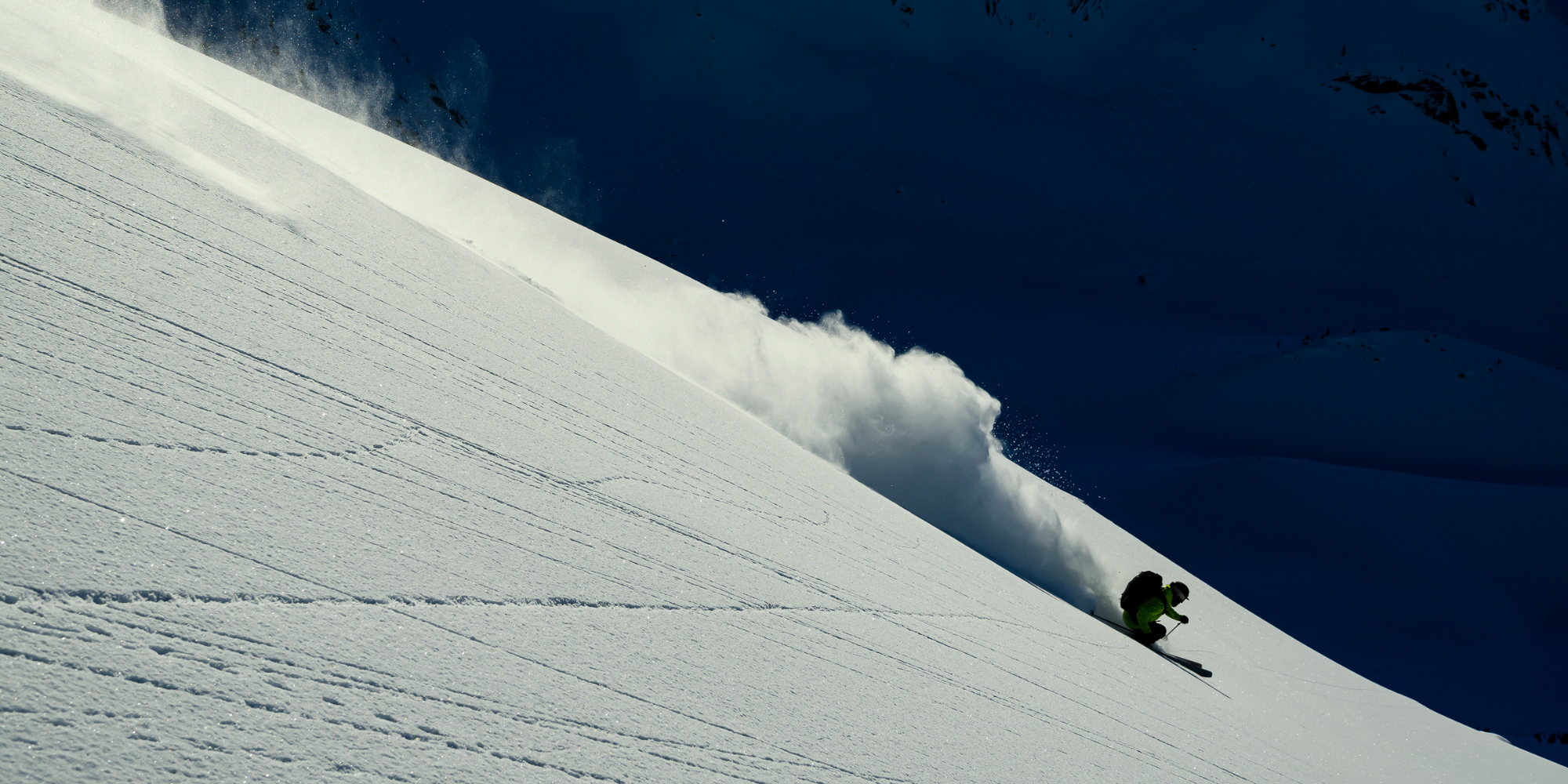Choosing the right skis doesn’t have to be hard. You don’t need to be a tech expert just take the advise from ours! Just know your style, sizing, and what terrain you love. We’ve broken it down for Aotearoa skiers in 2025.
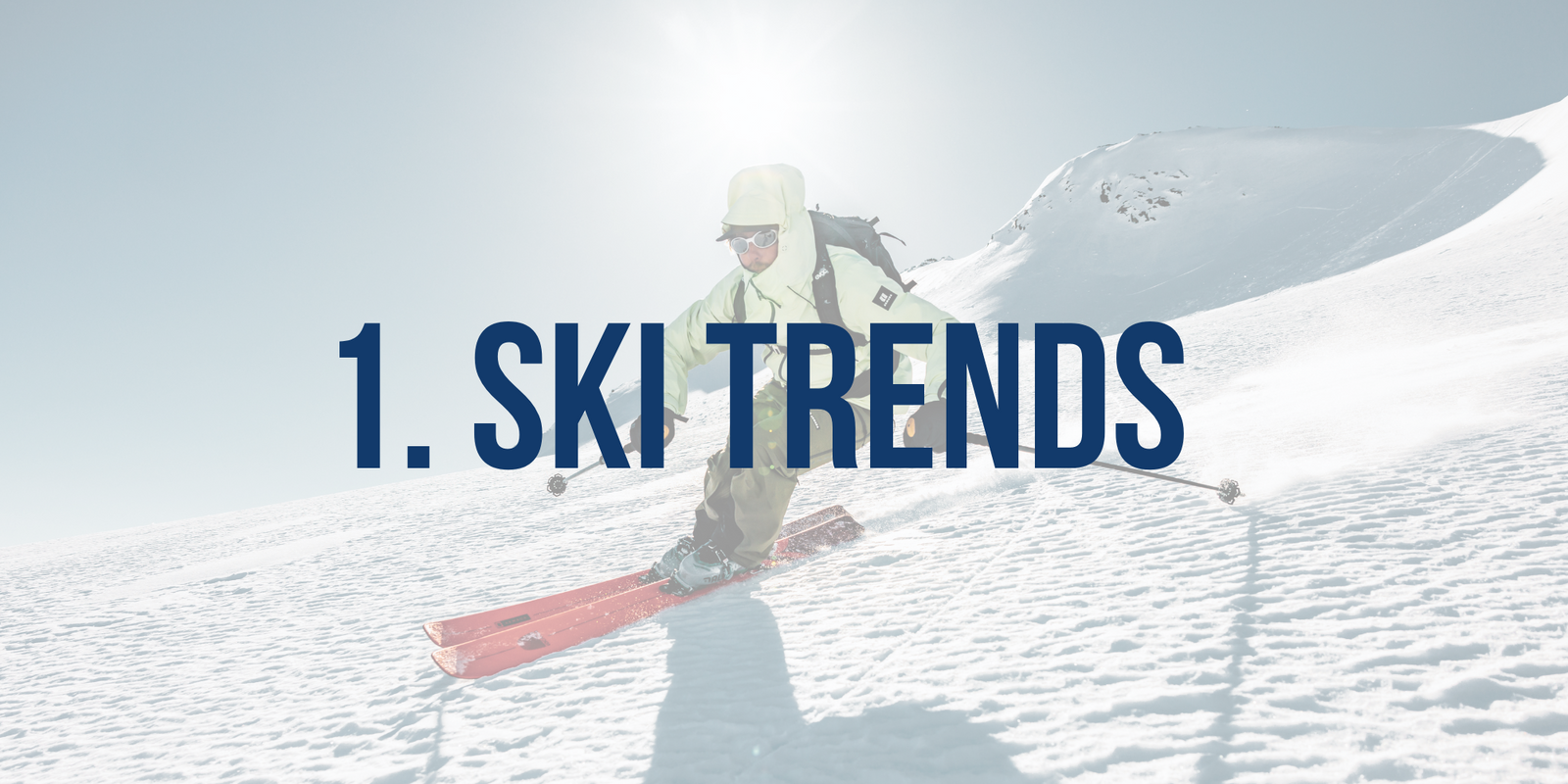
INNOVATION WITH PURPOSE
The 2025 ski season in Aotearoa is packed with fresh tech — and since we’re in the Southern Hemisphere, you get early access to what the rest of the world calls the 2026 range. That means cutting-edge gear from the Northern Hemisphere, in your hands first.
Key trends from our core brands:
K2 | Line | Nordica | Rossignol | Salomon | Armada | Blizzard
- Carbon and flax reinforcements are creating skis that are nimble underfoot but still stable at speed. Perfect for all-mountain and freeride.
- Expect skis that can carve groomers in the morning and float through powder in the afternoon. Rocker-camber-rocker profiles dominate, refined for smoother transitions and control.
- Twin-tip, butter-ready, and surfy. K2 and Line are making playtime the priority.
- Armada is turning heads with directional twins and bold aesthetics — fun meets function for big-mountain adventurers.
- Brands like Rossignol and Salomon are using recycled materials and eco-conscious manufacturing. Good for the planet, great on snow.
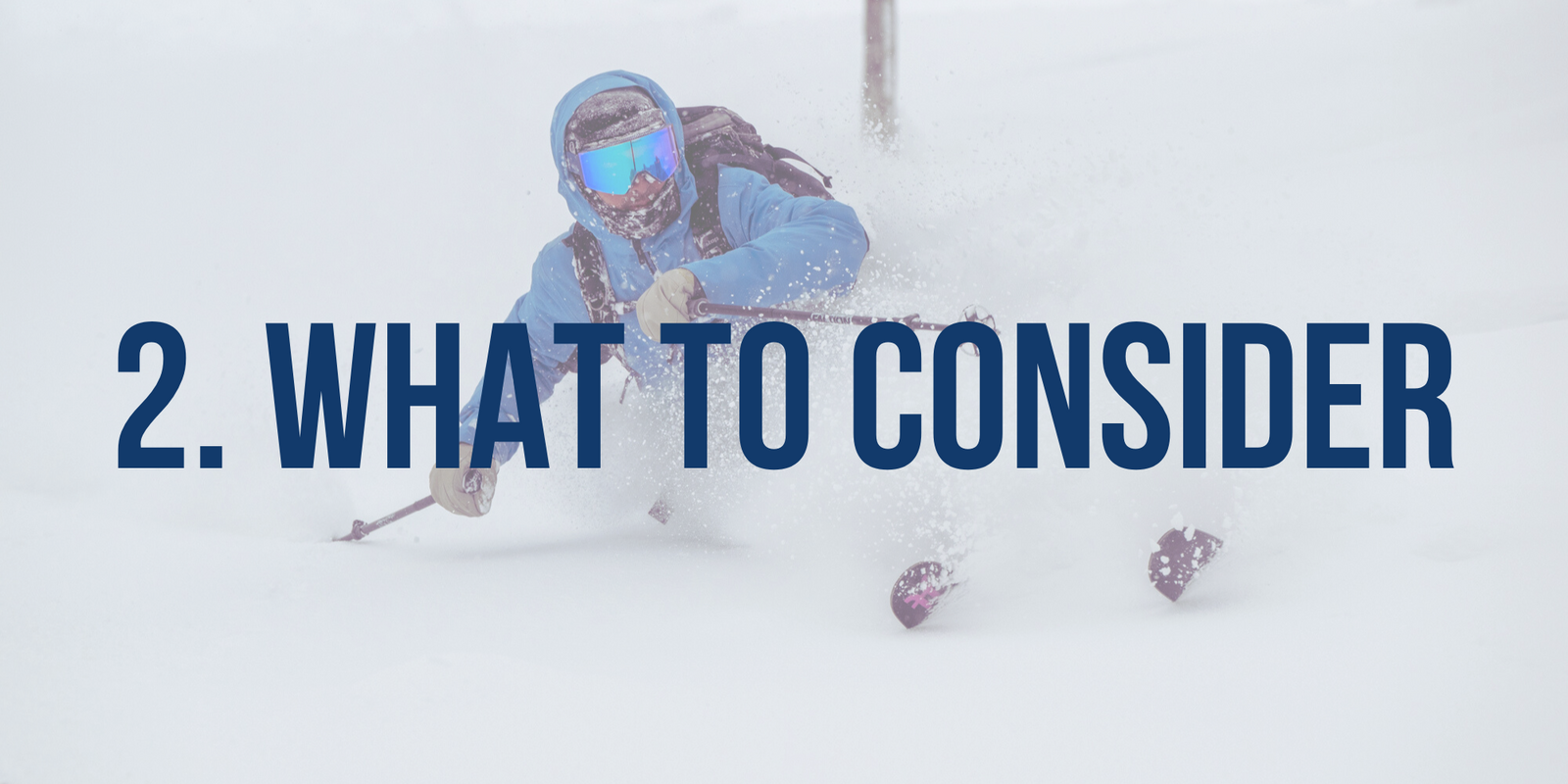
What Should You Consider When Choosing Skis?
- How light you are
- How tall you are
- What level of skiing you are at
- What do you want to get out of your skis
- And your level experience - where you like to ski and any other relevant information is a good place to start
From there we can recommend some options for you to have a look at to make sure we get you the right tool for the job.
The emphasis has moved away from traditional race skis. Carving/on-piste and all-mountain performance skis offer advanced and expert skiers the benefits of race technology, generated at world cup level, combined with wider waist widths and the deeper sidecuts flowing through from freeride skis.
There are a number of questions to consider that will narrow down your ski choices...
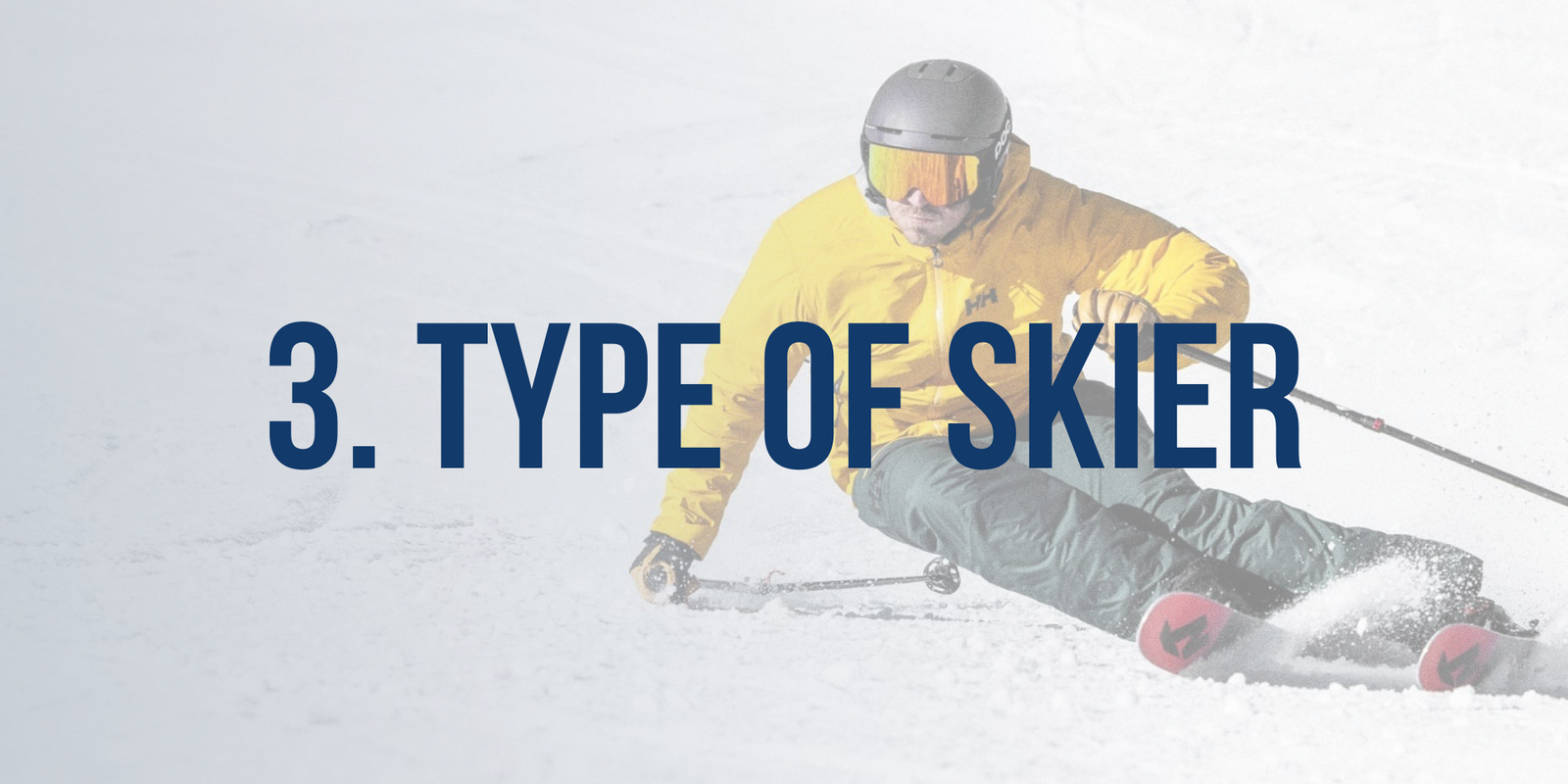
The type of skis you should buy depends on the type of terrain you plan to ski and your skills and skiing experience
Start your search for skis by asking yourself some important questions...
- “How long have you skied?” and “Where have you skied?”
Now you have considered your skiing experience, you need to think about the type of skiing you like:
- Do you like to ski slow, medium or fast?
- Do you like to make wide-open turns or quick snappy ones?
And, finally, you need to think about where you like to ski:
- Beginner, intermediate or expert trails?
- On the piste/groomers, off-piste or in the terrain park?
Your answers will help shape your ideal ski setup - so be honest, and think about the kind of skiing that gets you stoked.
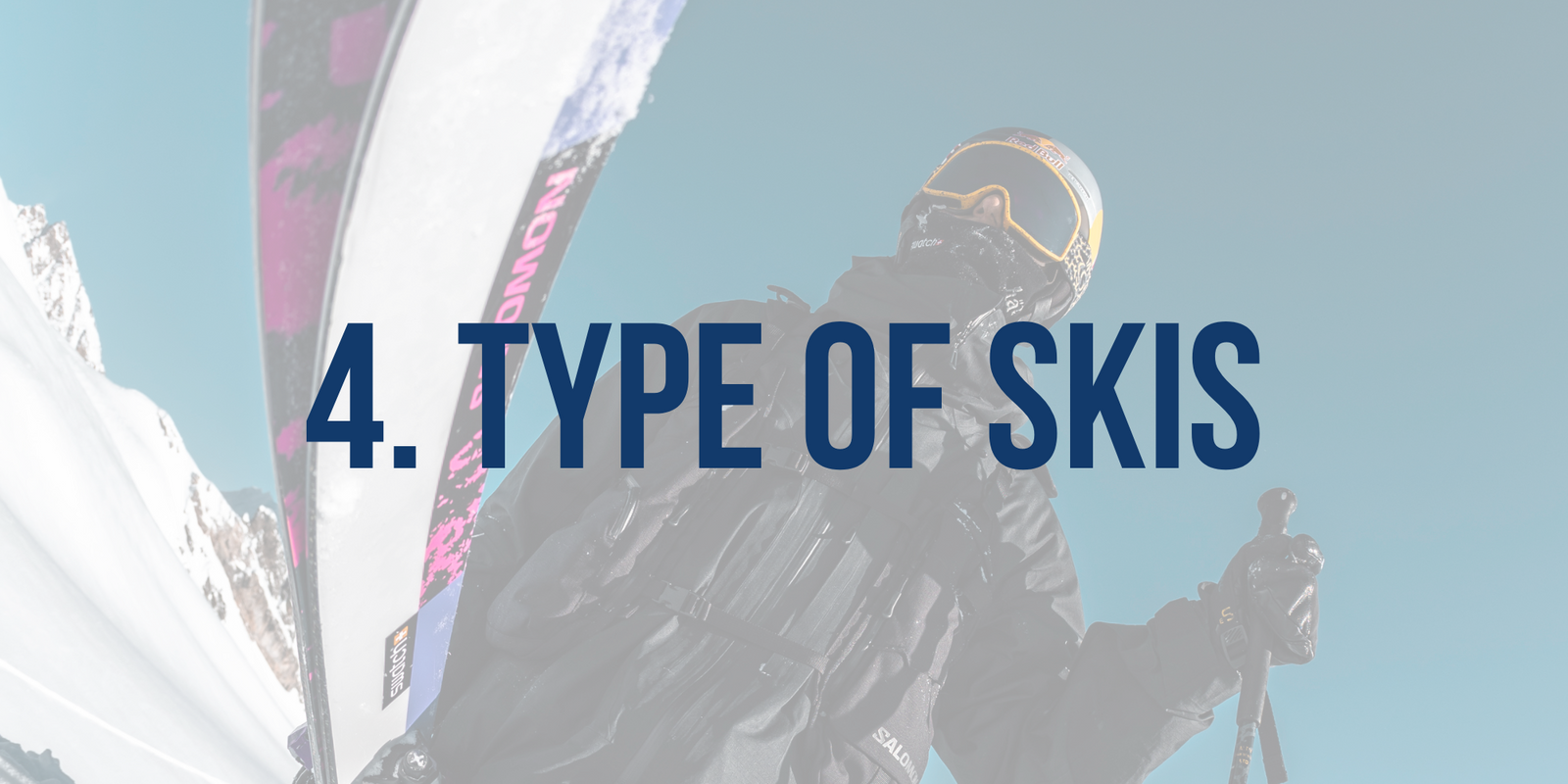
Skis are categorised in many ways. It can be very confusing, but there are only a few categories you really need to understand.
Click on the ski your looking at below for more information!
Carving skis are great for intermediate skiers and people who just want to have fun on the snow and mostly on the piste (that means the groomed runs). They are easy to turn and control in most situations. Skiers do not have to expend too much energy. The higher level carvers are designed to perform and are ideal for individuals who are looking to improve and develop their skiing. They are designed to help you progress towards perfect carve turns, with a stiffer tail to give more stability at a higher speed.
All-Mountain skis are designed to perform in all types of snow conditions and at most speeds. With wider waists and increased surface area, these skis will ride over difficult crud and variable snow with ease, while the wider tip helps to initiate the turn. This type of ski suits a lot of people because the majority of skiers don’t have the luxury of having several sets of skis to choose from and match to a day’s conditions.
Big mountain skis have a large surface area due to their wider waist width, this provides excellent flotation in all conditions from fresh powder to crud. Fat skis provide a real advantage if you want to learn to ski deep snow. Most of these skis have deeper sidecuts so they are easy to turn on piste when you need to. Suitable for people who prefer riding off-piste at least 60% of the time.
Powder Skis are designed to float atop powder, these are a popular backup pair of skis for those lucky enough to live in or visit places that get the big snow days! The mega-wide waist widths – ranging from 95mm to 130mm – keep the skis from sinking deep into fresh snow, but they can be challenging and sluggish to control on groomed runs.
Twin tip skis have a curved-up tail along with the standard curved-up tip. Originally, twin tips were most popular with the freestyle set and were used to take off or land jumps backward. Nowadays, twin tips are also available as all-mountain skis, though most are actually “directional twins” – slightly longer and wider in the front. These work well off-piste and in the powder due to their bigger surface area and increased sidecuts.
Typically stiffer, longer and narrower than the average ski. Most race skiers know what they want, so there’s no point in going too deep here. If you’re not a racer, don’t even consider race skis. Sometimes they are known as Slalom or GS skis.
All of the above categories can be divided into Women’s and junior groupings:
At BaseNZ we understand that women are built differently to men and that they have different needs in their equipment. Women are generally lighter and smaller than men and, as a result, tend to develop a skiing style based more on technique and finesse rather than raw power. And women’s equipment has been developed with this in mind. Women’s skis are lighter and softer to make pressuring the ski into an arc easier and help ease you into the turn. The binding position is moved forward, shifting weight to the tip of the ski making turn initiation easier. Women’s bindings are also lighter with lower release settings. Some include an angled ramp under the heel moving your body weight forward on the ski to compensate for a lower center of mass.
Skis for children come in shorter lengths than adult-size skis and are lighter and softer flexing. When buying equipment for children, make sure to get them the right size skis and boots so they’ll be comfortable, rather than expecting them to grow into larger sizes. Very young children often don’t need poles, which can interfere with learning proper balance.
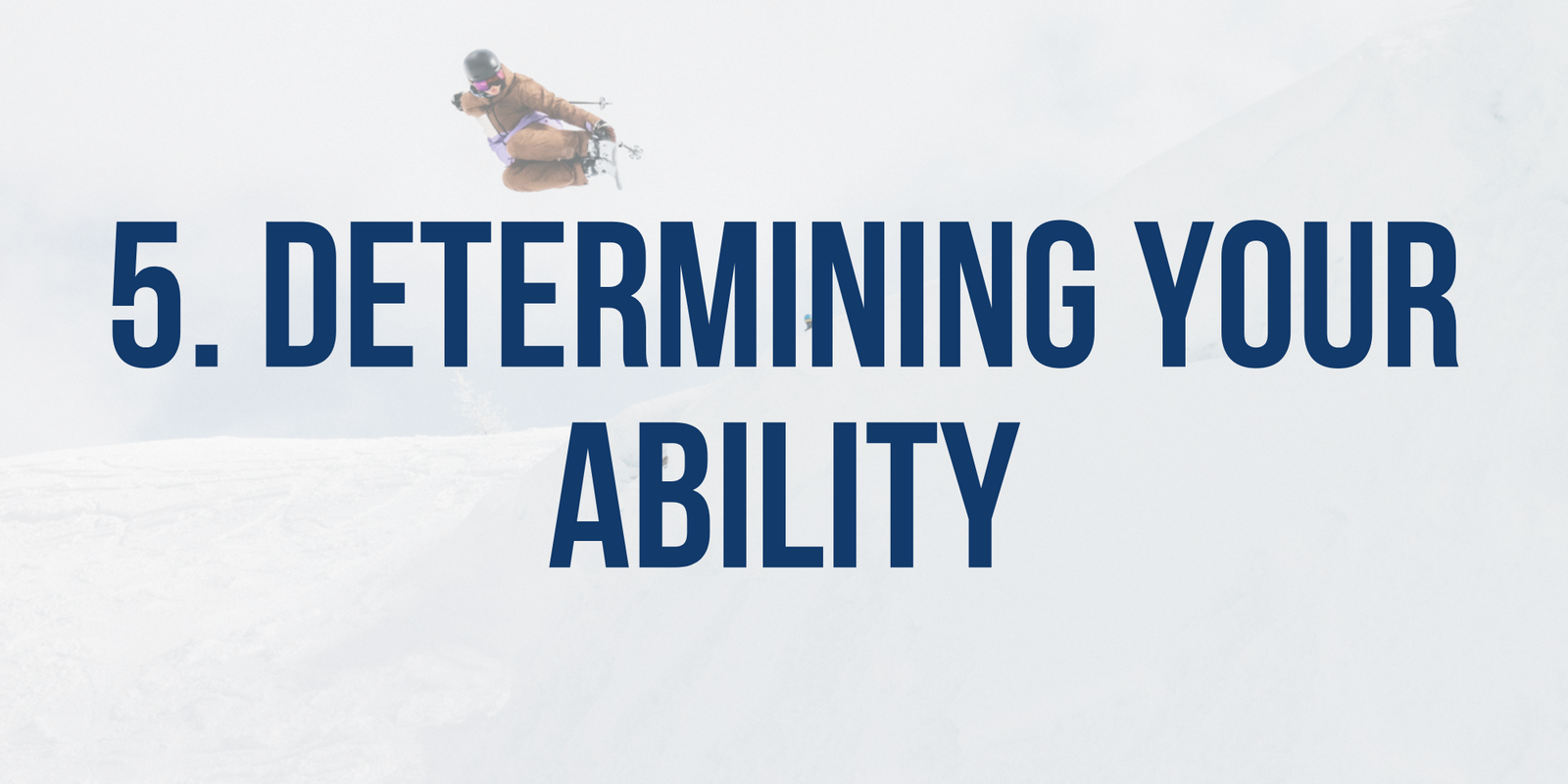
Pick a ski for the skier you are now - not the one you're hoping to be next season
There’s no such thing as a one-ski-fits-all-abilities setup. Choosing skis above or below your skill level will make learning harder and your days less fun. Here's why:
- Beginner/Intermediate skis are softer and more forgiving, easier to turn at lower speeds, and more manageable while you’re building technique.
- Advanced skis are stiffer and more responsive, designed to be ridden at speed. But if you can’t load them up with enough power, they’ll feel sluggish and hard to control.
💡 Base NZ Online tip: Use the "Ability" filter when shopping online, to see which ski matches your skill level.
Skill Level Breakdown:
This is the level for skiers who are just beginning their skiing careers. The skier has either never skied before or has skied only a few times.
When a skier is comfortable on the green runs (beginner runs) and is moving up to blue runs.
The comfort level is on groomed blue runs that can be skied with relative ease.
The skier is moving up to black diamonds and other terrain.
Black diamonds and other terrain are comfortable.
All-terrain including powder, out of bounds, moguls, etc. are skied with ease.
Avoid Going Too Advanced Too Soon
Advanced skis need more speed, more technique, and more aggressive input to perform well. If you’re not quite there yet, they’ll be harder to handle — and way less fun.
✔️ Match your current level
✔️ Choose something that allows you to improve
❌ Don’t get sucked into buying race skis unless you’re racing
Still unsure where you sit? Our crew can help — just get in touch.
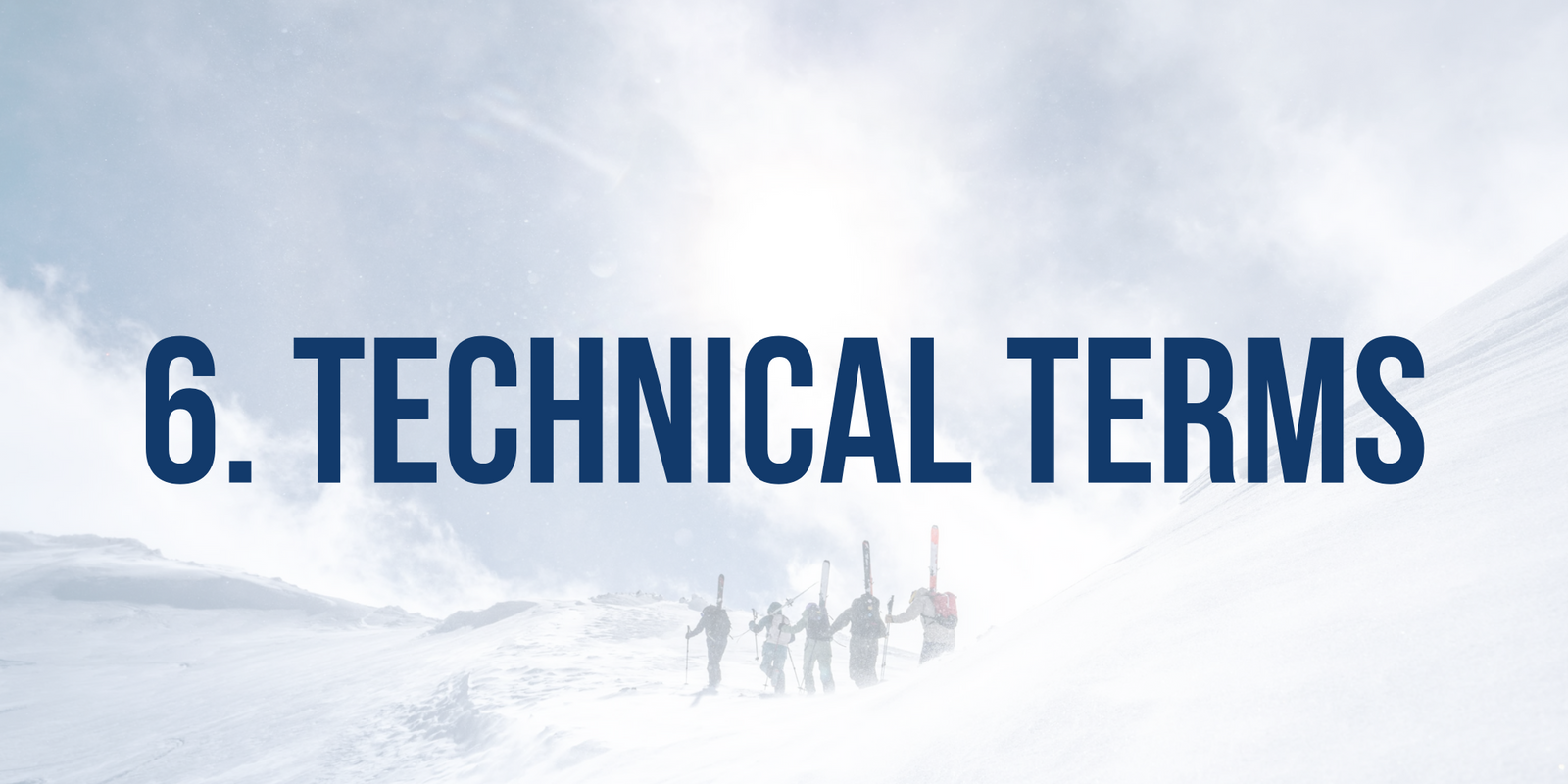
Tech talk got you tangled?
We break down the ski jargon so you don’t have to Google it mid-mountain. From sidecut to flex, here’s what those specs actually mean — in plain English.
Technically speaking, sidecut refers to the long, inward curves on both sides of a ski. It's designated by 3 numbers: the widths, in millimeters, of the ski's tip, waist and tail. The greater difference in these numbers means the larger the sidecut.
All modern skis have a sidecut so that they can turn when you tip them onto the edge. Without it, your skis would want to go straight when you decided to cut left or right.
Very basically: Shorter = easier. Longer = harder, but faster. Because of the sidecut, skis no longer need to be long in length to give you plenty of stability at high speeds. As a general rule, most beginner skis should come up to your nose, intermediate skiers around eye height and expert skiers your forehead to head height. But you need to consider the type of skiing you’ll be doing, your skill level, and your weight. All these things impact how long a ski should be.
Generally, beginners and intermediates should stick with shorter skis for ease of turning and better control. Once you move up to greater speed and different kinds of conditions, you can begin to play around with your ski length — longer might in time be better for you.
Skis continue to get wider in most user groups. Ski width is typically measured in three areas: the width at the tip, at the waist, and at the tail (for example, 122/90/115). These measurements give you an accurate idea of the uses for a ski.
Generally, your ski needs to be wider if you’re going to be skiing in powder. The more time you plan to spend off-piste /in powder, the wider you want your skis to be. This spreads your weight out and lets you glide over the snow, instead of plowing through it. Wider skis also provide a more stable platform, which makes it easier to balance when moving through variable snow conditions.
Ski flex is the term used to describe how hard it is to bend the ski in order to make it turn. A softer flex is used a lot in beginner skis, as it makes them easier to handle. As riders improve they ride faster and more powerfully meaning they require a stiffer flexing ski to get the most control and performance.
While sorting through skis, you’ll notice many come with bindings attached. These are known as integrated bindings, as they are built into and are a part of the skis themselves. So, what set-up should you choose? Unless you’re an experienced racer or freestyle skier with specific binding needs, integrated bindings are highly recommended.
READY TO FIGURE OUT YOUR SKI LENGTH?
Have a read through our Ski Size Buyers Guide here
Need A Hand? Contact us
PHONE: 03 443 6698 | EMAIL SHOP@BASENZ.COM


